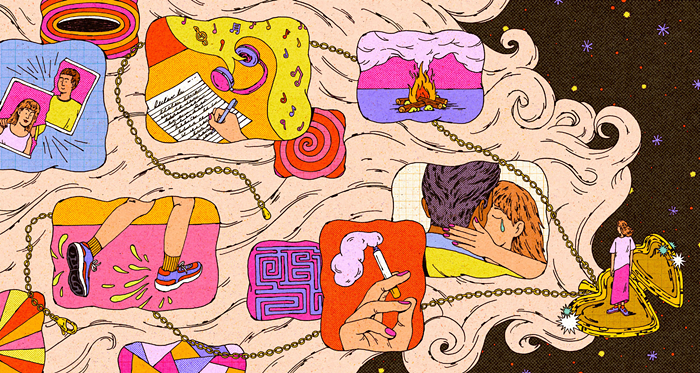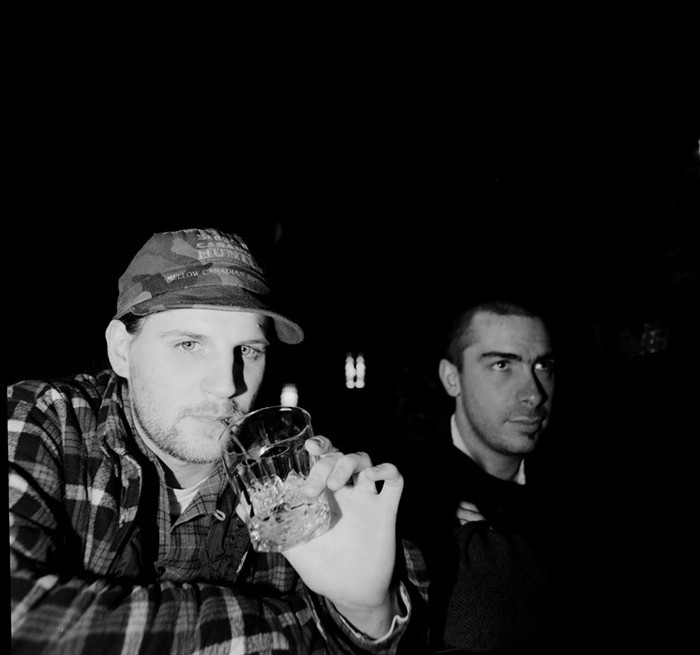Another year, another excavation of a dynamite proto-punk band whose music’s been unjustly sitting in an archive unheard for decades. Jack Ruby flourished in the crucial years of 1973-1977 in New York City, sounding like the more extreme parts of the Velvet Underground’s rougher repertoire, Cleveland’s Electric Eels, various factions of NYC’s imminent no wave movement, and even early Sonic Youth. (SY's Thurston Moore recently weighed in on Jack Ruby in The Guardian. Of course.)
Like another long-lost proto-punk outfit, Detroit’s Death, Jack Ruby had tough luck with the record industry and didn’t play out much. Consequently, they slipped into oblivion. Jack Ruby’s secret weapon was Randy Cohen, who played Serge Modular synthesizer in the wired, abstract manner of Pere Ubu’s Allen Ravenstine (albeit different synths), but Cohen generated an even greater range of fucked-up noise. Cohen eventually left music to become a writer for Late Night With David Letterman and then went on to author The Ethicist column for the New York Times. (Sell out. I’m jealous.)
Thankfully, the UK label Saint Cecilia Knows this week issues a double CD of Jack Ruby’s recordings, titled Hit and Run. The 21 tracks here still send shocking jolts of weirdness and adrenaline, even to jaded old collectors like your blogger. In retrospect, it’s understandable that Jack Ruby—who consisted of vocalist Robin Hall, guitarist Chris Gray, multi-instrumentalist Cohen, violist Boris (also known as Boris Policeband), and later bassist George Scott (Contortions/8-Eyed Spy/John Cale) and vocalist Stephen Barth—didn’t really go anywhere during their brief existence. They were too strange for radio and too raw for most record labels, and they probably just lacked enough good connections to ascend to the minor notoriety enjoyed by bands like Mars, DNA, and Gray. Another factor: Jack Ruby also eluded the notice of Brian Eno, who potentially could've slapped ’em on the fabled No New York compilation. But it was not to be.
Hit and Run proves once again that the long-term project of salvaging great music from obscurity is as worthwhile as ever, and far from over.
Press release after the jump.
The collected recordings of legendary lost 1970s New York City band, Jack Ruby. Seen and heard by just a precious few, Jack Ruby made only five studio recordings and played an equal number of gigs between 1973 and 1977. None of their music was ever released and, until now, they have existed solely as a word-of-mouth legend among peers. Yet their legacy and influence can clearly be heard in bands that followed in their wake like Sonic Youth and Teenage Jesus And The Jerks. They have been variously described as "The Velvet Underground in a car crash" and the "art-punk Steely Dan." Formed in 1973 by vocalist Robin Hall, guitarist Chris Gray, multi-instrumentalist Randy Cohen, classically-trained viola player Boris (also known as Boris Policeband), and later joined by bassist George Scott (James Chance And The Contortions/8-Eyed Spy/John Cale) and new vocalist Stephen Barth, the first incarnation of Jack Ruby demoed two tracks in a Times Square recording studio in 1974; their signature tune, the nihilistic proto-punk "Hit and Run" — sounding like some unholy blend of Raw Power-era Stooges, Velvet Underground and J.G. Ballard's Crash — and a bizarre number entitled "Mayonnaise," based around Boris' amplified viola and primitive electronic "beats" sequenced on Cohen's Serge synthesizer. These two cuts were used to hustle additional studio time from Epic Records through Sly Stone's A&R, Stephen Paley. Three more maniacal songs of arch art-punk with killer pop hooks — "Bored Stiff," "Bad Teeth," and "Sleep Cure" — were all recorded in one five to six hour session at Columbia Studios in May 1974. With Cohen patching musique concrète sounds through the Serge, set against Gray's banshee guitar-playing and Hall's snotty vocals, the Jack Ruby sound was formed. But a record deal evaded them. Cohen left and started a new career as a writer for Late Night With David Letterman and, later, as The Ethicist, a columnist for The New York Times solving readers' ethical problems. In 1976, Hall and Gray reactivated Jack Ruby as a live-performing unit with George Scott on bass. They played harder, faster and louder than any other band in New York at that time. Their rehearsals at Matrix studios, and dusk-to-dawn parties at the Bowery apartment behind CBGB's shared by Gray and Scott, became a cult draw for other NYC punk and no wave musicians. Hall quit the band unexpectedly in 1977, days before their first scheduled gig. Jack Ruby continued on as a power trio with Gray, by now the only original member, taking over vocal duties for a couple of shows alongside Teenage Jesus And The Jerks and the Fleshtones, before disbanding for good after one last riotous show with new vocalist Stephen Barth at Max's Kansas City, formerly stalking ground of the band's idols, The Velvet Underground. Hit and Run is a two-disc set of everything Jack Ruby recorded between 1973 and 1977 (across four incarnations of the band) that should see them acknowledged as one of the most radical and brilliantly original groups to emerge from the 1970s New York City music scene. Remastered from recently-discovered master tapes, the first disc collects all five of the band's studio recordings, which although 40 years-old still sound thrillingly urgent and modern, alongside a 1977 cassette of a band rehearsal, and a 2013 remix by producer Don Fleming. Disc two contains another side to Jack Ruby; a series of largely-electronic, avant-garde pieces from 1972 and 1974 — nine short tracks that play like a library record, book-ended by two longer ones — some of the earliest extant recordings made on a Serge synthesizer. What Jack Ruby left is a remarkable legacy of recorded music — hidden for decades, now-revealed — constituting a previously-unheard secret history of the New York City music scene of the early 1970s.



















